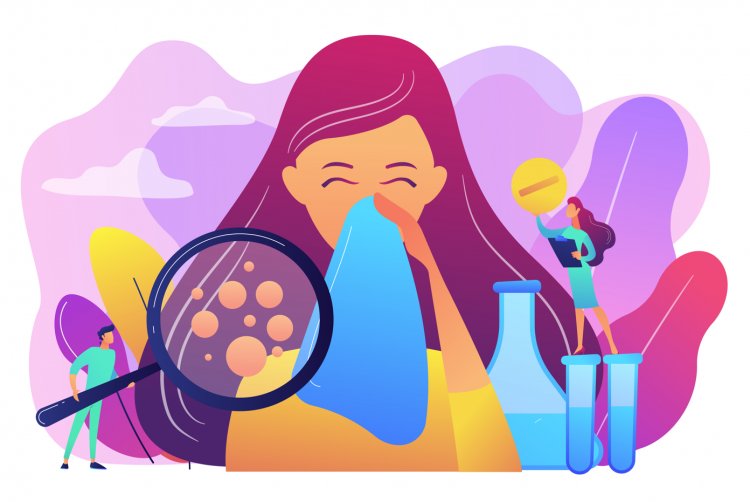A Closer Look at Antihistamines: Benefits, Types, and Side Effects
Antihistamines are a pivotal class of medications widely utilized to manage allergic reactions and their associated symptoms. They function by blocking the effects of histamine, a substance in the body that contributes significantly to allergic symptoms. This guide delves deeper into the mechanisms, types, uses, and safety considerations of antihistamines.

Mechanism of Action
Histamine is a biogenic amine involved in local immune responses and regulating physiological functions in the gut and acting as a neurotransmitter. It is stored in mast cells and basophils and released during an allergic reaction. Histamine exerts its effects by binding to histamine receptors, which are classified into four types: H1, H2, H3, and H4.
H1 Receptors: Found in smooth muscles, endothelium, and the central nervous system. Activation of these receptors leads to symptoms such as vasodilation, bronchoconstriction, pain, itching, and increased permeability of blood vessels.
H2 Receptors: Located primarily in the stomach lining, these receptors stimulate gastric acid secretion.
H3 Receptors: Primarily in the central nervous system, they modulate neurotransmitter release.
H4 Receptors: Found in the bone marrow and white blood cells, they play a role in immune response regulation.
Antihistamines used for allergic reactions primarily target the H1 receptors. By blocking these receptors, antihistamines prevent histamine from eliciting its effects, thereby reducing symptoms such as itching, swelling, and vasodilation.
Types of Antihistamines
Antihistamines are generally divided into two main categories based on their development history and properties: first-generation and second-generation.
First-Generation Antihistamines:
Characteristics: These are older antihistamines known for their effectiveness and sedative properties. They can cross the blood-brain barrier, leading to central nervous system effects.
Examples: Diphenhydramine (Benadryl), chlorpheniramine, brompheniramine, promethazine.
Uses: Besides allergy relief, they are often used as sleep aids, in cold medications for their sedative and anticholinergic effects, and in the treatment of motion sickness and nausea.
Second-Generation Antihistamines:
Characteristics: These are newer antihistamines designed to minimize sedation and central nervous system effects. They have a lower ability to cross the blood-brain barrier.
Examples: Loratadine (Claritin), cetirizine (Zyrtec), fexofenadine (Allegra), desloratadine (Clarinex).
Uses: Primarily for long-term management of allergic rhinitis, chronic urticaria, and other allergic conditions without causing significant drowsiness.
Applications of Antihistamines
Antihistamines are used to treat a variety of conditions, including but not limited to:
Allergic Rhinitis (Hay Fever):
Symptoms: Sneezing, runny nose, itching, nasal congestion.
Treatment: Both first and second-generation antihistamines can be used, but second-generation are preferred for long-term use due to fewer side effects.
Urticaria (Hives):
Symptoms: Itchy, raised welts on the skin.
Treatment: Non-sedating second-generation antihistamines are typically recommended.
Allergic Conjunctivitis:
Symptoms: Itchy, red, watery eyes.
Treatment: Oral antihistamines or antihistamine eye drops.
Eczema:
Symptoms: Chronic, itchy, inflamed skin.
Treatment: Antihistamines are sometimes used to reduce itching.
Cold Symptoms:
Symptoms: Runny nose, sneezing.
Treatment: Often included in combination cold medications to relieve these symptoms.
Motion Sickness and Nausea:
Symptoms: Nausea, vomiting, dizziness.
Treatment: Antihistamines like meclizine and dimenhydrinate are effective.
Sleep Disorders:
Symptoms: Insomnia.
Treatment: First-generation antihistamines due to their sedative properties.
Side Effects and Safety Considerations
While generally safe, antihistamines can cause side effects, which vary between first and second-generation drugs.
Common Side Effects:
First-Generation:
- Drowsiness and sedation.
- Dry mouth.
- Dizziness.
- Blurred vision.
- Constipation.
- Urinary retention.
Second-Generation:
- Headache.
- Dry mouth.
- Fatigue (less common).
- Nausea (rare).
Serious Side Effects:
- Cardiac arrhythmias (rare, mostly with certain second-generation antihistamines in high doses).
- Severe allergic reactions.
- Confusion and cognitive impairment (particularly in the elderly).
Precautions:
Medical Conditions: Use with caution in individuals with glaucoma, prostate enlargement, heart disease, high blood pressure, thyroid problems, liver disease, and kidney disease.
Drug Interactions: Antihistamines can interact with other medications, such as alcohol, sedatives, muscle relaxants, and antidepressants. Always consult a healthcare provider before starting antihistamines.
Pregnancy and Breastfeeding: Pregnant or breastfeeding women should seek medical advice before using antihistamines, as some can pass through the placenta or into breast milk.
Antihistamines are invaluable in the management of allergic reactions and other conditions. Understanding the differences between first and second-generation antihistamines, their mechanisms, applications, and potential side effects is crucial for their effective and safe use. Consultation with a healthcare provider ensures the appropriate selection and use of these medications tailored to individual health needs.
Disclaimer: The information provided in this article is for educational purposes only and should not be considered medical advice. If you have any health concerns or are experiencing symptoms, it is important to consult with a healthcare professional, such as a doctor or clinic, for proper diagnosis and treatment. Always seek the advice of your doctor or other qualified health provider with any questions you may have regarding a medical condition. Do not disregard professional medical advice or delay in seeking it because of something you have read in this article.
#Histamine #Antihistamines #AllergicReactions #MedicalInformation #Healthcare #AllergyRelief #FirstGenerationAntihistamines #SecondGenerationAntihistamines #HealthTips
What's Your Reaction?





















